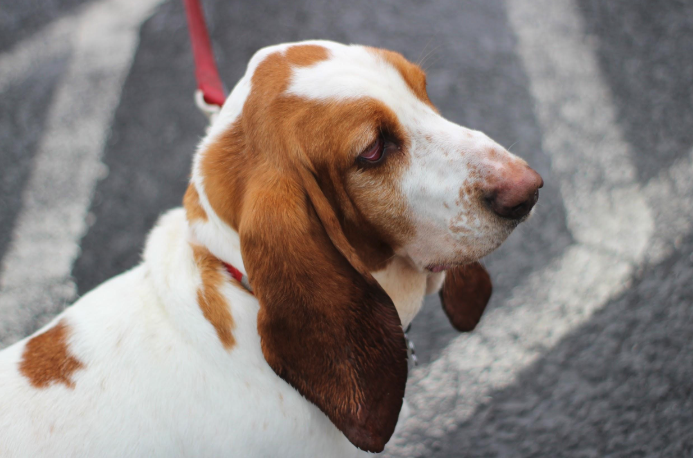What is a pedigree dog? In simple terms, it’s a dog that’s been born from two canines of the same breed and been officially registered with a recognised society or club that holds a register for these dog breeds, such as the American Kennel Club.
‘Dog showing’ was a new hobby that began growing in popularity during the late 19th-century. People would gather to parade their pet dogs in these contests to establish which was the best-looking of the dogs on show. This later evolved into competitions to discover the top specimen of a certain breed. In 1891, the first-ever Crufts Dog Show in the U.K. was held and from here the idea of a ‘purebred dog’ began to gather pace.
Because of the popularity of these competitions among the public, purebred dogs gained recognition for being considered as ‘better’ than mixed breed dogs (these dogs were and still are, referred to as “mongrels”).
The Kennel Club was established and began running dog shows and setting rules for breeding and showing. As a way of upholding a dog’s “purity”, each breed was given a written description of its size and appearance, and this was called a breed standard.
Today, we know that purebreds can incur some health issues and this is the result of inbreeding. While some of the following health issues can happen in any dog, purebred pedigree dogs have a bigger probability of having these ailments.
That’s not to say that you shouldn’t consider owning a pedigree dog, but you should be aware of the common complaints that certain breeds need help with when you are a pet owner.
To give you an idea, here are some of the most common health issues related to pure breed dogs:
Breathing
Some breeds of pedigree dogs have very short muzzles, officially known as a brachycephalic. Canines who fall into this category, such as Bulldogs, Pugs, Boxers, Shih Tzus and Pekingese often have trouble breathing because of a condition called Brachycephalic Airway Obstruction Syndrome (BAOS).
For brachycephalic dogs, their skull length is visibly reduced; however, the amount of soft tissue in the muzzle isn’t and the result of this is the same amount of tissue subsequently being pressed into a reduced area.
The end of their palate, known as the “soft palate”, is too long and thick for the size and shape of their face, and this causes it to obstruct the back of their throat. Loud pig-like snoring noises occur when they breathe.
This distinctive trait has been intentionally selected as a way of conforming to the breed standard of brachycephalic dogs. In many cases, dogs confirmed to have BAOS require surgery that will alleviate their breathing difficulties.
Ear Problems
In pedigree dogs that are bred exclusively for their extra-long ears that hang over their ear openings, such as the Basset Hound, American Cocker Spaniel, English Springer Spaniel and Poodle are prone to ear infections because of their covered ear canals.
They can become excessively hot and humid – which is the ideal breeding grounds for yeast and bacterial infections.
Additionally, the Shar-Pei is another breed that is susceptible to ear infections as their markedly narrow ear canals causes seriously reduced air circulation, therefore creating abnormal amounts of moisture and natural ear wax becoming trapped in the ear canal.
In severe cases, a veterinarian may advise surgery. This is a procedure called a Total Ear Canal Ablation (TECA). This surgery removes the ear canal, eliminates the diseased tissue and averts the recurrence of infection for the dog.
Difficulty with Labour
In some brachycephalic breeds, birthing issues arise due to Fetopelvic Disproportion. Dogs with this condition require surgical intervention, referred to as Obstructive Dystocia, which is common among some extreme cases of brachycephalic dogs.
An article published in The Journal of Small Animal Practice titled the Proportion of Litters of Purebred Dogs Born by Caesarean Section named the 10 breeds with the highest caesarean rates, which were as follows:
1. Boston terrier
2. Bulldog
3. French bulldog
4. Mastiff
5. Scottish Terrier
6. Miniature Bull Terrier
7. German Wirehaired Pointer
8. Clumber Spaniel
9. Pekingese
10. Dandie Dinmont Terrier
Puppies whose heads are too big to pass naturally through the comparatively narrow pelvises of their mothers need medical and/or surgical involvement for the safest labour possible.
Chondrodystrophy
Chondrodystrophy isa skeletal condition that affects the development of cartilage causing it to mature abnormally. Furthermore, the long bones fuse quicker than regular bones do and this leads to stunted growth.
Common Chondrodystrophic breeds include the Dachshund, Beagle, and French Bulldog. Pedigree dogs are actively selected to accommodate the desired short and curved limbs. These breeds are at an increased likelihood of spinal injury which is brought on by an excessively long spinal column, overly short legs and also their abnormal cartilage. They are therefore more at risk of ruptured discs, known as Intervertebral Disc Disease (IVDD).
In less severe cases medication can help to alleviate pain. For dogs with progressive IVDD, surgery is the usual course of treatment, accompanied by pain medication and crate rest. In any case, it’s recommended that dogs seemingly suffering from IVDD symptoms should visit a veterinarian so that a diagnosis and course of action that will suit the dog can be agreed.

